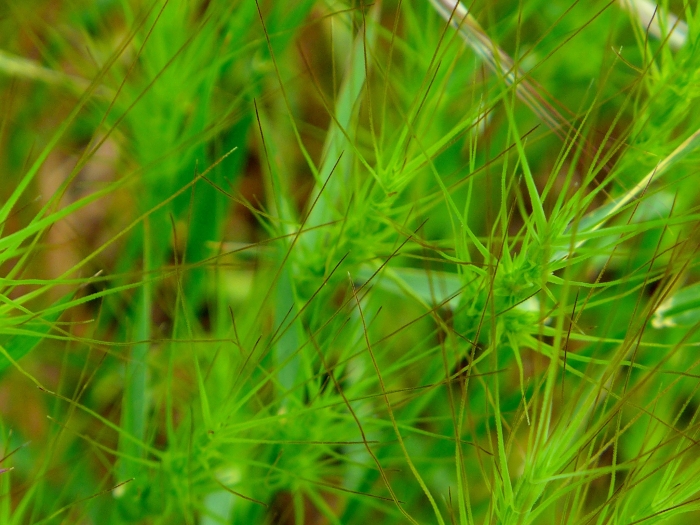Barbed Goatgrass
(Aegilops triuncialis)
Barbed Goatgrass (Aegilops triuncialis)
/
/

icosahedron
CC BY 4.0
Image By:
icosahedron
Recorded By:
Copyright:
CC BY 4.0
Copyright Notice:
Photo by: icosahedron | License Type: CC BY 4.0 | License URL: http://creativecommons.org/licenses/by/4.0/ | Rights Holder: icosahedron | Publisher: iNaturalist | Date Created: 2014-05-20T05:31:11-07:00 |

























Estimated Native Range
Summary
Aegilops triuncialis, commonly known as barbed goatgrass, is a winter annual grass native to the Mediterranean region, including Eastern and Mediterranean Europe and Western Asia. It typically inhabits rocky, serpentine soils in open grasslands and disturbed areas. This species has a growth habit that forms dense clumps and can reach up to 60 centimeters in height. The inflorescences are spike-like with barbed awns that can adhere to animal fur, aiding in seed dispersal. Barbed goatgrass is particularly adapted to dry conditions and poor soils, making it a hardy species in its native range.
Barbed goatgrass is known for its ability to outcompete native vegetation, especially in California where it has become invasive. It is often found in grasslands, rangelands, and open spaces, where it can form dense stands that reduce biodiversity and alter fire regimes. Due to its invasive nature, it is not recommended for cultivation outside its native range. In areas where it is not invasive, it may be used for soil stabilization or as a cover crop in poor soils. It requires minimal water once established and prefers full sun exposure. However, its aggressive nature and potential to become weedy should be considered before planting.CC BY-SA 4.0
Barbed goatgrass is known for its ability to outcompete native vegetation, especially in California where it has become invasive. It is often found in grasslands, rangelands, and open spaces, where it can form dense stands that reduce biodiversity and alter fire regimes. Due to its invasive nature, it is not recommended for cultivation outside its native range. In areas where it is not invasive, it may be used for soil stabilization or as a cover crop in poor soils. It requires minimal water once established and prefers full sun exposure. However, its aggressive nature and potential to become weedy should be considered before planting.CC BY-SA 4.0
Plant Description
- Plant Type: Grass
- Height: 1-2 feet
- Width: 1-2 feet
- Growth Rate: Rapid
- Flower Color: N/A
- Flowering Season: Spring
- Leaf Retention:
Growth Requirements
- Sun: Full Sun
- Water: Low
- Drainage: Medium, Fast
Common Uses
Erosion Control, Low Maintenance
Natural Habitat
Native to the Mediterranean region, including Eastern and Mediterranean Europe and Western Asia, and thrives in rocky, serpentine soils in open grasslands and disturbed areas
Other Names
Common Names: Aegilope-Alongado, Jointed Goatgrass, Blat Bord, Goat Grass, Halmuca Tregishtëe
Scientific Names: , Aegilops triuncialis, Aegilopodes triuncialis, Aegilopodes triuncialis subsp. persica, Aegilopodes triuncialis subsp. triuncialis, Aegilopoides triuncialis, Aegilopoides triuncialis subsp. persica, Aegilops aristata, Aegilops aristata, Aegilops buschirica
GBIF Accepted Name: